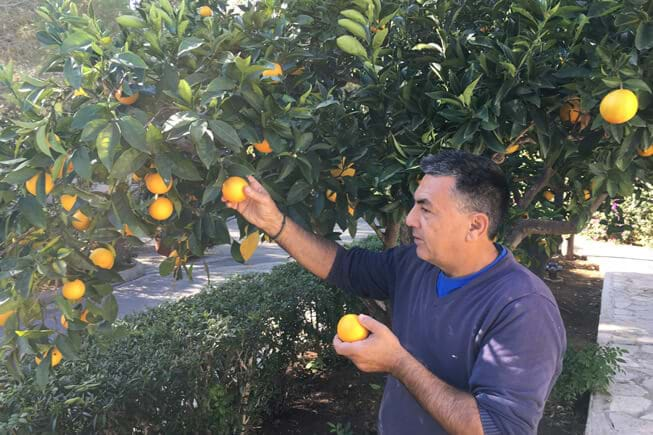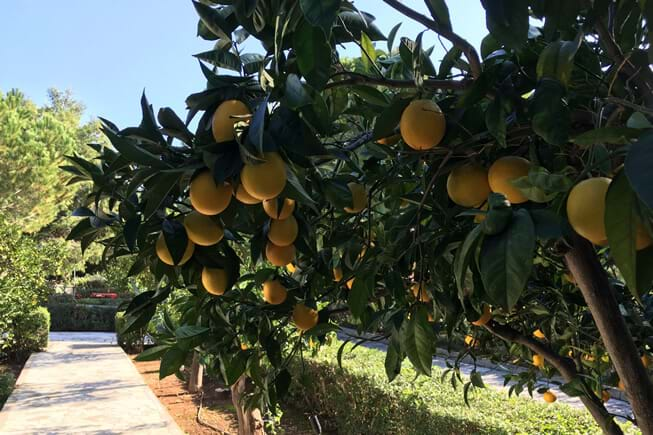The gardens of Anassa include about twenty citrus trees, producing mandarins, oranges, and lemons. Around this time of year, their fruit ripens and can be picked. The growth cycle starts in April, when the trees flower. Bees from the nearby village of Neo Chorio fly over to help with pollination. The flowers turn into fruit and begin a long process of maturation. During the hot summer months, the citrus trees are watered regularly; gardeners remove new growth from tree trunks to ensure that light and air can reach the fruit. It is not until November that fruit is ready for harvest. Then the gardeners begin culling the trees once a week, looking for fruit that has changed from green to orange or yellow—the longer the fruit remains on the tree, the sweeter it will be. The trees continue to produce fruit until as late as March. Under optimal conditions, each tree can produce about 120 kilograms of fruit per season. Fertilizer is applied from January to April to help strengthen the trees. Once fruiting is finished, gardeners thin out any dead branches. And then it is time for the growth cycle to begin again! The harvested fruit is brought to the hotel’s kitchen, where the cooks make good use of it. Some of the fruit is juiced and served immediately as a beverage. Other pieces can be served whole or in fruit salads. Yet more can be preserved or turned into jams and jellies for the breakfast buffet.

